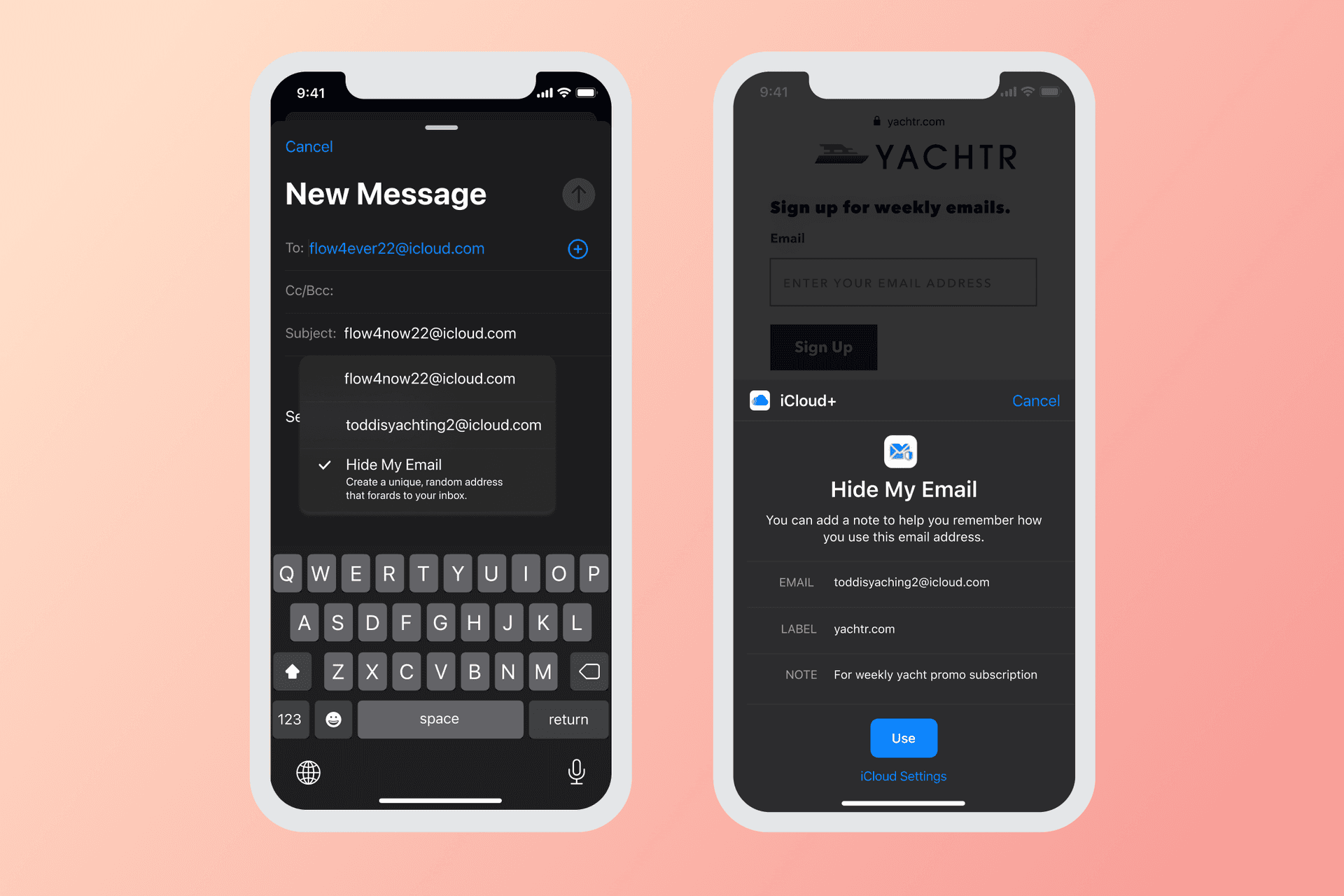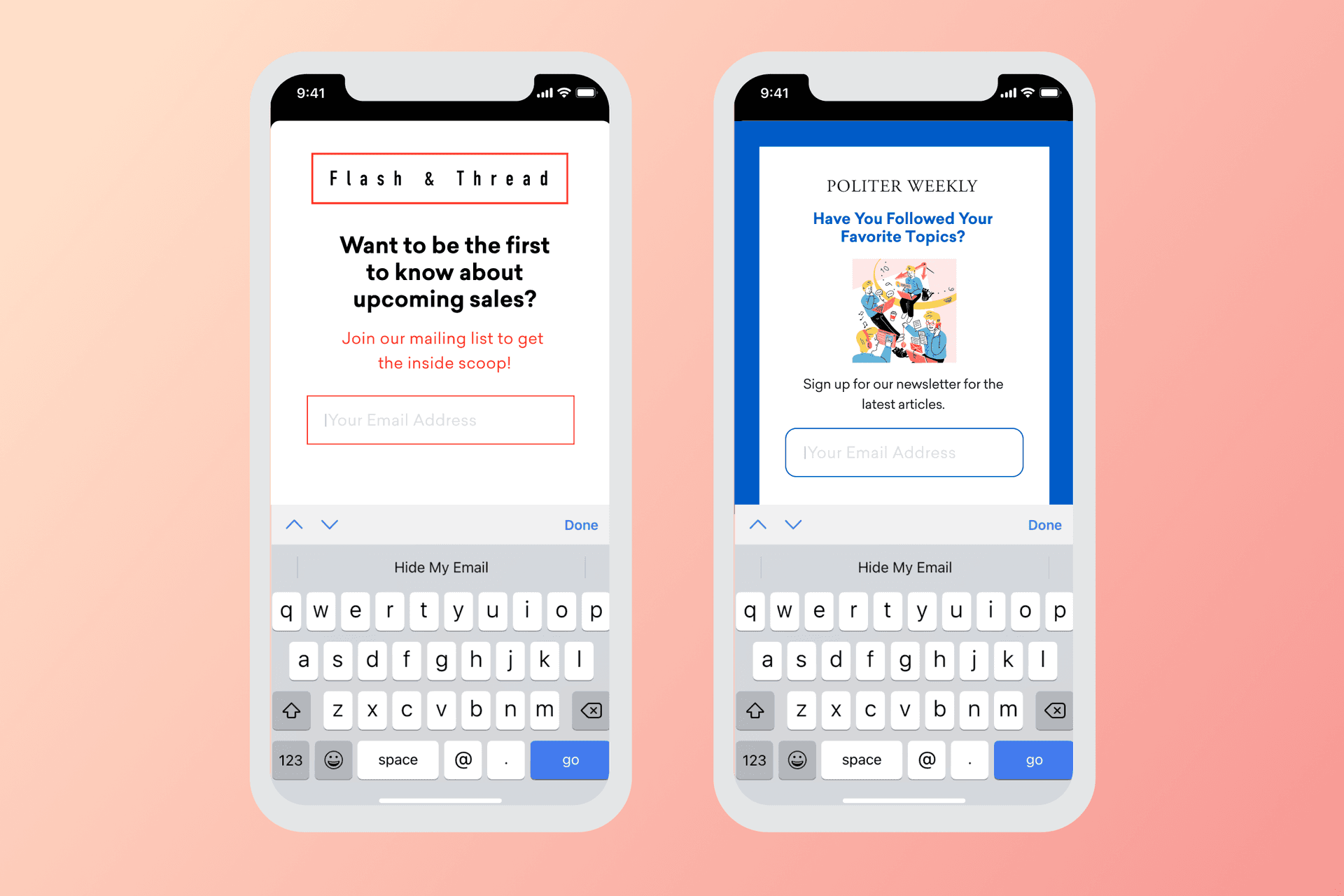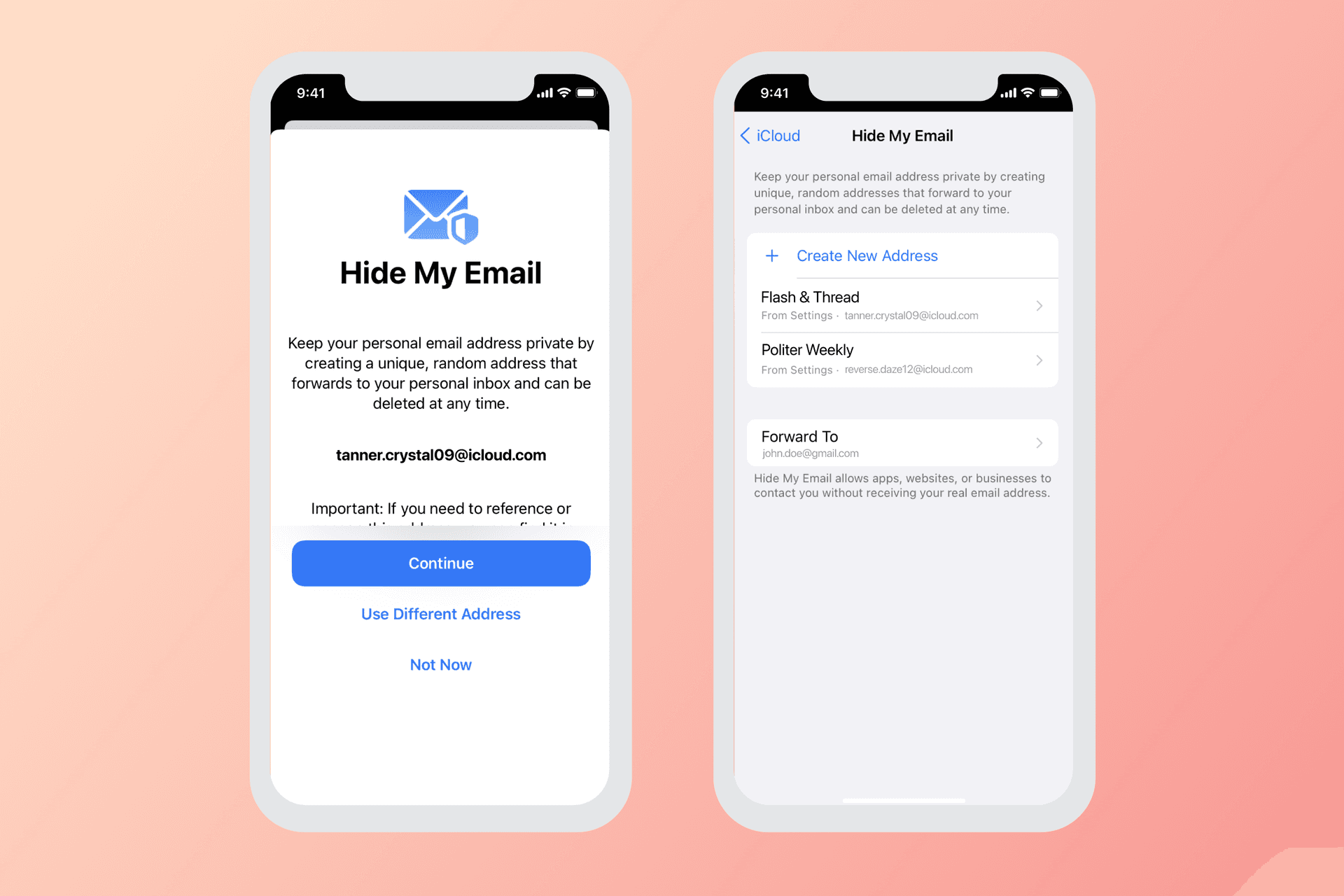Get Ready for Apple’s Hide My Email: How It Works and What It Means For Your Marketing
Published on September 01, 2021/Last edited on September 01, 2021/5 min read


Tiffany Lin
Associate Product Manager, BrazeFor today’s brands, it’s an expected pattern: Each spring, Apple and Google announce updates to their mobile operating systems (and other key products), and each fall these updated OSes are officially released, shifting how consumers can engage with the companies they patronize on mobile and beyond. Sometimes those shifts are small (e.g. new icons) and sometimes they’re very significant—think 2016’s launch of rich push notifications or 2020’s deprecation of IDFA.
But while the 2021 Apple update cycle is following the same pattern as years past, the potential implications of this year’s changes are arguably among the biggest ever seen. While the pending release of Apple’s Mail Privacy Protection (MPP) feature is expected to have the biggest impact on brands’ customer engagement strategies, there’s another notable feature that email marketers need to keep an eye on—Apple’s Hide My Email (HME).
HME will make it significantly easier for users to provide anonymized email addresses to brands, potentially impeding their email marketing efforts. To avoid this outcome, brands need to start preparing now. In order to simplify that process, let’s dig into what HME is, how it appears to work based on preliminary testing by Braze, and how brands can get ready to respond.
What Is Hide My Email?

Hide My Email is in many ways an extension of the company’s Sign In With Apple feature; in fact, HME takes the email privacy protection that earlier feature pioneered and extends them to a much wider number of websites and services. In essence, HME allows consumers to to automatically generate anonymized email addresses that can be used to login or create an account on any website or app, and to easily forward or block messages from those brands as the user desires.
How Does Hide My Email Work?
Starting this fall, Hide My Email will show up as an option when a user types into a website email collection field on Apple’s updated operating systems.

In addition, users will be given the option to manually add random email addresses to the feature within their iCloud settings.

One thing to keep in mind: Hide My Email is part of Apple’s new iCloud Plus offering, which was announced at this year’s WWDC. To access the suite of privacy- and data-focused consumer features available with iCloud Plus (which include HME), users will need to subscribe to a paid iCloud plan (however, these plans can be as cheap as $0.99 per month).
Users taking advantage of Hide My Email aren’t just able to easily provide anonymized email addresses to the websites they visit; they also have increased control over whether they receive email messages from these brands. With HME, consumers will be able to easily forward emails from these unique, random or ad hoc email addresses to their main email inboxes, or to deactivate them, effectively blocking marketers from reaching them via email.
During Braze testing of Hide My Email, we found that sending email to an email address that was deactivated via HME resulted in a hard bounce. In addition, we determined that some of the changes associated with HME have the potential to impact the ability of users to respond to messages delivered via this feature. Our testing found that the “from” email address associated with messages delivered using HME were modified to become iCloud domains (i.e. [email protected] would become [email protected]). When we attempted to reply to these new iCloud email addresses, we discovered that while the reply email was successfully forwarded back to the reply-to email we’d set, it ironically ended up being ported into that account’s spam folder.
How Should Brands Prepare for Hide My Email?
While we expect the potential impact on your customer engagement efforts from Hide My Email to be significantly smaller than MPP, that doesn’t mean that you shouldn’t get ready. After all, the launch of HME this fall may lead to a rise in the number of users who can easily turn off your ability to email them at will and do it without notifying you.
However, while Hide My Email poses a challenge for email marketers, with the right approach it should ultimately be a surmountable one. Keep in mind that the foundation of a strong email program is sending users messages that they’re interested in receiving and likely to engage with. Engaging customers using Hide My Email isn’t materially different from engaging ones who aren’t using it. In both cases, you need to foreground the customer experience in your email program and leverage segmentation, personalization, and real-time data to better inform your outreach and provide real value to your customers in this channel. If you’re doing that effectively, they’ll keep engaging, and if you aren’t, they don’t need this new feature to unsubscribe; they’ll just do it the old fashioned way.
Final Thoughts
While Apple’s introduction of Hide My Email may add a layer of complexity to your email marketing program, it doesn’t have to be a serious issue. In general, if your brand embraces a transparent, data-driven approach to customer engagement, you’re likely well-positioned to maintain a strong email program even in the face of this key shift.
Not sure if your email program is where it needs to be in terms of targeting, personalization, and adding value? Now is the time to take effective action to change that. Get a head start by checking out our exclusive personalization guide.
Related Tags
Be Absolutely Engaging.™
Sign up for regular updates from Braze.
Related Content
View the Blog
The new inbox reality: How iOS changes are reshaping email marketing

Aparna Prasad

Experience optimization: Turning data insights into better journeys

Team Braze

December 2025 Bonfire Marketer of the Month: Jagex’s Emma Oliver
